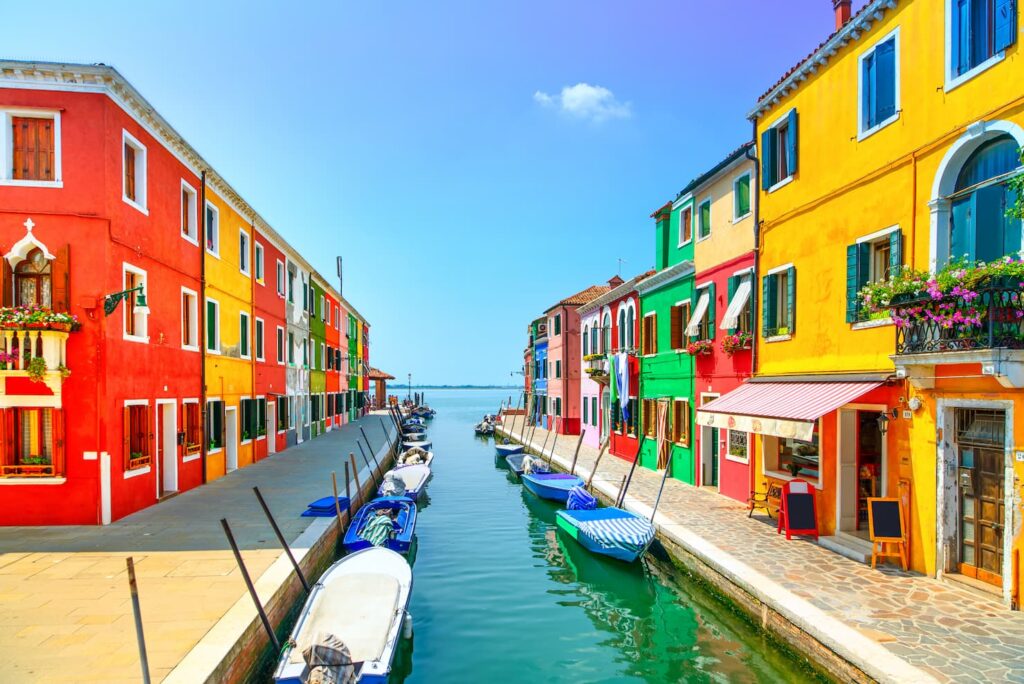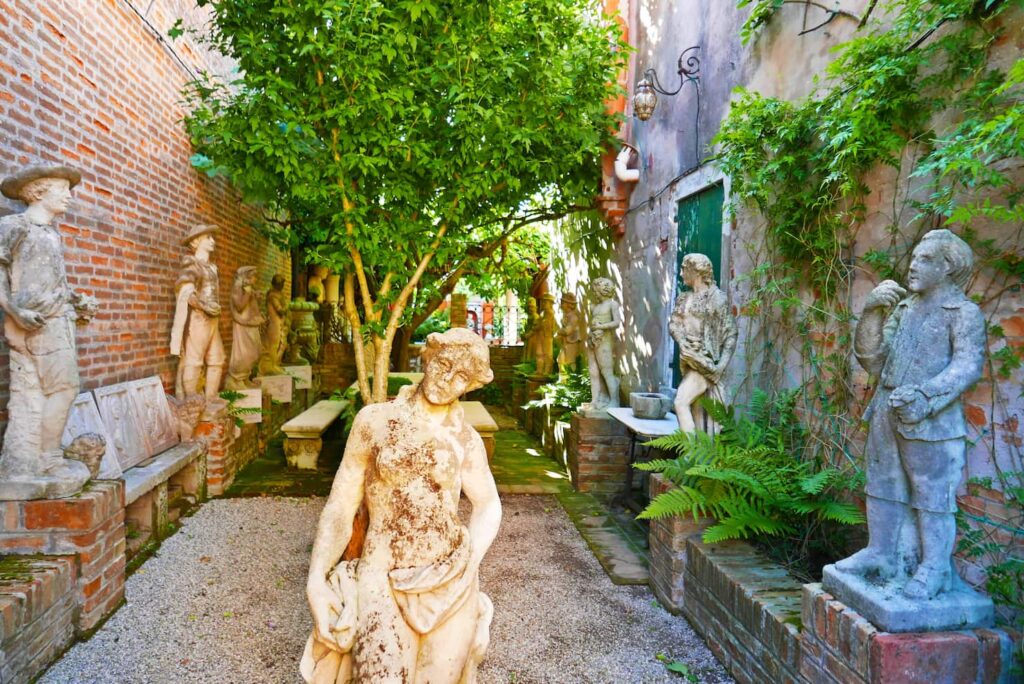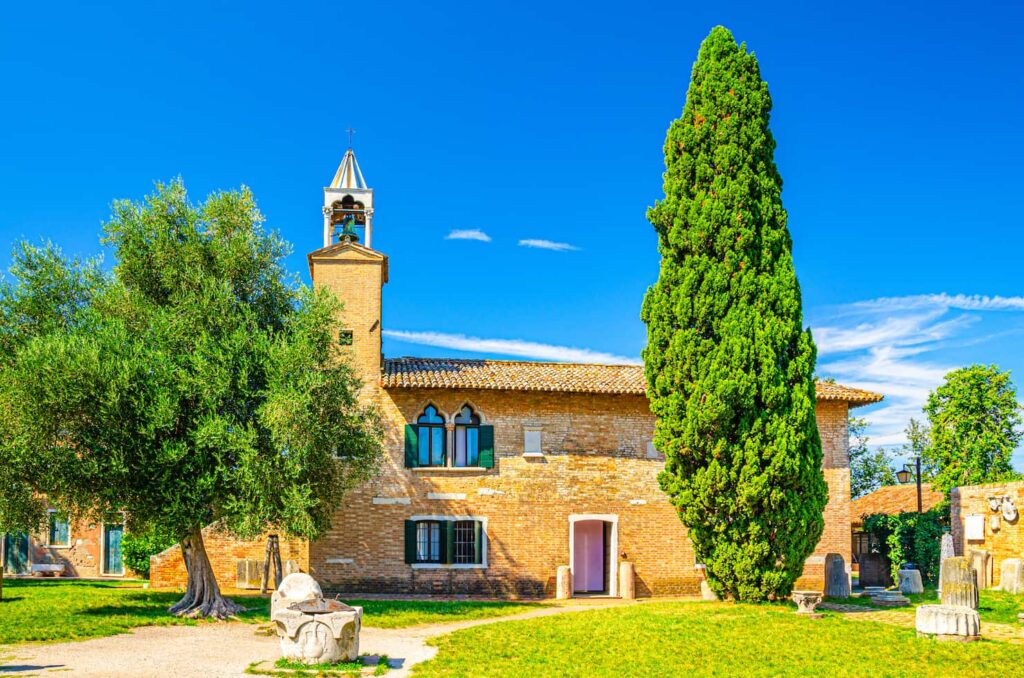Have you heard of the museums of Murano and Burano but not the one in Torcello? Now is a good time to catch up!
In fact, Torcello plays a fundamental role in the history of the entire lagoon, and visiting this museum is essential to learn about the origins of this area.
Planning your visit to the Torcello museum means discovering history and art, a journey that through artifacts and works delivers a crucial and very interesting insight into the lagoon and its islands.
Read on to find out everything you need to know about the Torcello Archaeological Museum and what you can see inside.
Want some advice? Visit the Torcello Museum through an organized lagoon package: art, history and curiosities all just a click away!

BEST SELLER EVER
Tour of Murano, Burano and Torcello + Glassblowing Demonstration
Discover a scenic boat tour of the islands of Venice with a visit to a Murano glass factory and glassblowing demonstration
Secure payment
Instant confirmation
Mobile ticket
What to see at the Torcello Museum: Art, archaeology and traditions
As early as the first century AD, this island was a key location: a meeting point and commercial exchange between sea and land.
One could consider Torcello as the first port of call to reach Altino, an important Roman city and crossroads that united west and east.
The museum is organized into two different sections, the Archaeological and the Medieval and Modern. The tour is designed to follow chronologically the evolution of the area and the island.
The visit, in fact, begins with the earliest archaeological findings: a valuable record of trade that goes back as far as the time of the Mycenaean era, that is, the second millennium B.C.
The exhibits not only refer to Venetian society, but are also Roman and pre-Roman evidence, as well as Byzantine and early medieval.
The historical journey continues to the centuries closest to us, reaching the great splendor of the 19th century that saw the Serenissima dominate.
The first part of the visit takes place inside the Palazzo dell’Archivio, a structure dating back to the 12th century in which the oldest artifacts belonging to the various cultures that lived and traded commercially in the area are housed .
The historical period of interest is very broad: starting from prehistoric times to late Roman times, and you will find artifacts, ceramics, bronzes, amulets and various tools.

Statues inside the museum | ID 124602581 @ Sergio Simoes | Dreamstime.com
The medieval and modern section, on the other hand, is housed inside the Council Palace, a 14th-century Gothic-style building.
Itwas here that the Torcello council met although little of the original structure has been preserved and the building has undergone several restorations.
Inside you will find many works and documents ranging from the first centuries of the Christian era to the nineteenth century that aim to reconstruct the history of Torcello.
The exhibits in this section are varied in nature: tombstones, architectural fragments, oriental works such as the 6th-century holy water stoup, medals, wooden sculptures, Byzantine icons, and panel paintings from the 14th and 15th centuries.
In addition, there are ceramics, coins, glass, and other everyday objects or artifacts from workshops and kilns that testify to the island’s past life and Byzantine and Tuscan influences.
In addition, temporary exhibitions and cultural events are organized at the Torcello Museum: for example, on June 15, a meeting entitled “Altino and Torcello: a history of two” was held.
Visit the museum’s website or contact us if you would like to stay informed about upcoming events!
History of the museum and its importance to Torcello

Torcello Museum | ID 197088887 @ Antanovich1985 | Dreamstime.com
The Torcello Museum was founded in 1870 with the aim of curbing the dispersion of Torcello’s artistic heritage.
It was at the behest of the former Prefect of Venice, Luigi Torelli, if the birth of the museum was possible and the collection of artifacts found in the lagoon area began.
In 1872, the museum came under the control of the Province of Venice, which continued the recovery of historical artifacts: the collection also expanded through donations and private collections.
In 1887 the Palazzo dell’Archivio, the current home of part of the museum, was restored and the collection was moved inside its rooms.
It was not until the mid-twentieth century that the museum was reorganized into the two sections into which it is still divided today, also expanding between the rooms of the Council Palace.
The museum has thus become a vitally important stop for learning about and understanding the history of the lagoon since its beginnings, having been a vital link between the West and the East, as well as an important point of cultural, artistic and economic exchange.
Details and useful info
- Address: Piazza Torcello, Torcello, 30142 Venice (VE);
- Tickets: Full: € 3.00; Reduced: € 1.50 (for groups and children aged 6 to 12); Free admission: school classes with teachers, children under 6, EU citizens over 65, residents of the province of Venice (Thursdays only);
- Phone: +39 041 730761;
- Email: museo.torcello@cittametropolitana.ve.it
- Phone for reservations: +39 041 730761;
- Types: Regional Recognition L.R. 17/2019, Art, Archaeology, General.
Hours, tickets and tips for visiting
The Museum observes different hours depending on the time of year:
- nov. 1 to Feb. 28: 10:30 a.m. – 4 p.m
- march 1 to October 31: 10:30 a.m. – 5:30 p.m
However, you should know that the museum will be closed on all national holidays except August 15, which is regularly open. It also closes on November 21 and every Monday.
To access the museum you will have to buy a ticket on site at a cost of 3€, but there are reductions and exemptions.
In fact, for groups of more than 10 people or for children between the ages of 6 and 12, the cost of the ticket is €1.50.
Access to the museum, on the other hand, is free for classes accompanied by teachers and for children up to 5 years old.
European citizens over 65 will alsonot have to pay. Finally, on Thursdays, it is free to enter for all residents of the Province of Venice.

BEST-SELLING
Tour of Murano, Burano and Torcello + Glassblowing Demonstration
Discover a scenic boat tour of the islands of Venice with a visit to a Murano glass factory and glassblowing demonstration
Secure payment
Instant confirmation
Mobile ticket
Frequently asked questions
It is absolutely worth visiting Torcello! It is just 5 minutes from Burano and takes little time to explore. Here you will find the museum that tells the history of the lagoon, places that hold curious legends such as Attila’s throne and the Devil’s Bridge, as well as the beautiful Basilica of Santa Maria Assunta where you can admire precious Byzantine mosaics.
Visiting Torcello takes only two hours, which will be enough for you to explore the whole island. If you decide to forgo some attractions you may even be able to visit in less time.
The vaporetto ticket to Torcello costs 9.50 euros: it departs from Venice, and depending on the time of day you may need to change at Burano. Considering that the ticket lasts 75 minutes, it is often necessary to buy another one for the return trip or to visit other islands. Therefore it is convenient to purchase passes with which you can have unlimited access on the vaporettos for the duration of the pass.
Torcello can be visited entirely in a few hours: once you get off the vaporetto walk down the main street and you will first come across the Devil’s Bridge and then almost all the island’s main attractions concentrated in a small area. Within walking distance, in fact, you can admire the Basilica of Torcello, the Museum, the Church of Santa Fosca, the Locanda Cipriani and Attila’s Throne.
Conclusions
You now know exactly what to expect from the Torcello Museum and how to plan your visit to the lagoon so that this wonderful attraction, a must-see for the curious and history lovers, is included.
We have looked together at the Torcello Museum’s hours and how much admission costs. I also explained how the museum is organized and what can be visited inside.
The two sections that house the collections are organized in such a way as to take a path that follows a chronological thread: from the earliest Mycenaean records to the 19th century.
Art and history come together, passing through objects of daily use in homes and workshops, thus delivering a unique and truly fascinating testimony.
Finally, I answered the most frequently asked questions about the archaeological museum in Torcello. How about you? Have you already admired the artifacts contained here? Tell us your impressions in the comments!
Artistic and archaeological beauties come together, just as different cultures met and mingled in this area, a millennial crossroads and meeting place between East and West.
Don’t miss the Torcello museum: history, art and culture to tell you centuries of life in the lagoon!
